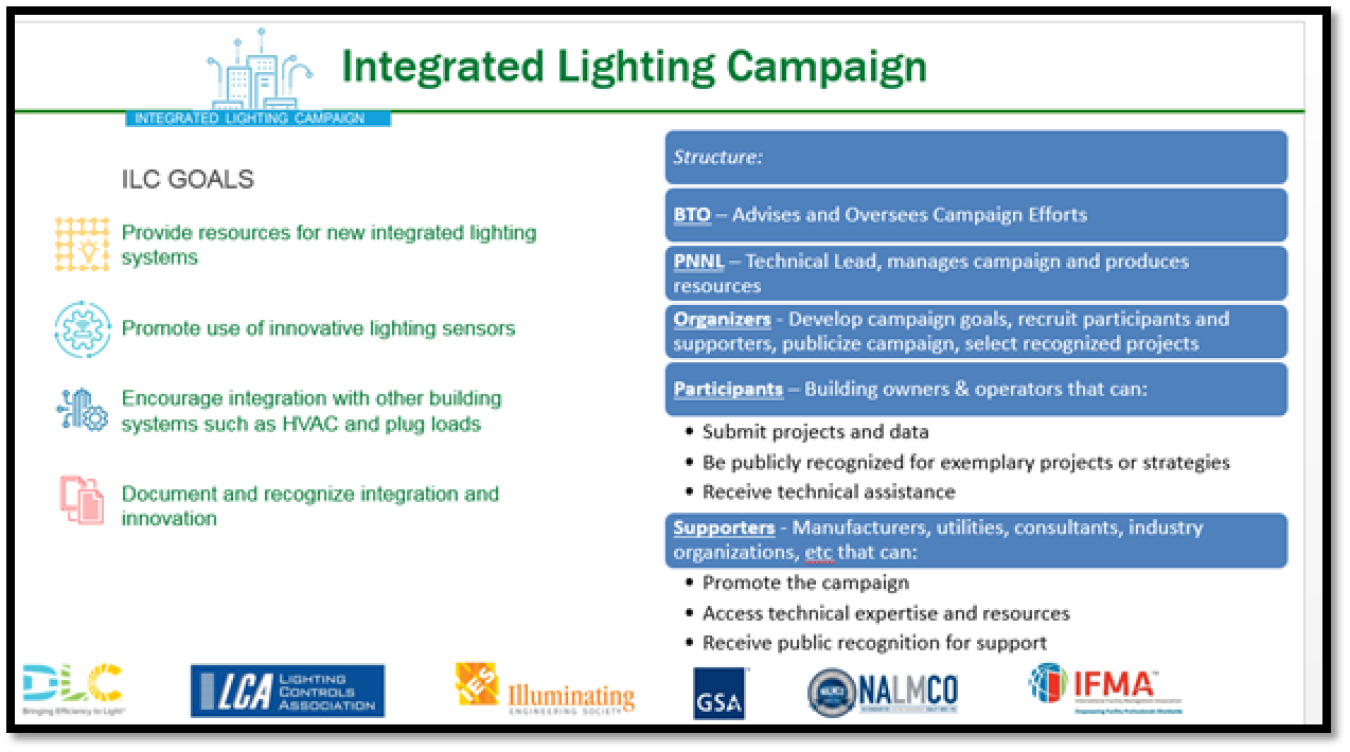Learn about the tech campaigns that help new technologies gain widespread adoption and building owners achieve significant energy savings.
March 10, 2021The U.S. Department of Energy’s (DOE’s) Better Buildings Initiative promotes energy efficiency in U.S. commercial buildings through collaboration, technical assistance, and resource development in partnership with building-industry stakeholders. As a core part of this initiative, the Better Buildings Alliance focuses on technology deployment through innovative and successful technology campaigns. Run by the DOE Building Technologies Office’s (BTO) Commercial Buildings Integration program, these campaigns help new technologies gain widespread adoption and building owners achieve significant energy savings.
BTO identifies technologies that have the potential to deliver significant energy-efficiency benefits and launches campaigns to deploy these technologies across thousands of buildings, stimulating the market and creating a widespread and lasting impact. Led by experts from DOE’s national labs, campaigns partner with industry to provide technical assistance, implementation guidance, and recognition of exemplary projects and practices. This deployment effort also supports follow-on research and development, tracking of savings, and identification of more market opportunities.
Current Technology Campaigns
Recognizing the need to improve the performance of the walls, windows and roofs of U.S. buildings, as well as the untapped value of integrating lighting with other building systems, the Better Buildings Alliance and its partners launched two new campaigns at the Better Buildings Summit in June 2020: the Building Envelope Campaign and the Integrated Lighting Campaign. These newly launched campaigns are actively seeking interested partners to get involved, with deadlines approaching soon.
Building Envelope Campaign
The Building Envelope Campaign (BEC) drives investment in comfortable, energy-efficient buildings by improving the performance of walls, windows, roof, and foundation—the primary thermal barrier between a building’s interior and the exterior. The campaign lays out goals for building-envelope performance, highlights energy savings opportunities, and offers direct technical support to building owners and managers.

Building Envelope Campaign participants can earn recognition for new construction projects or retrofits to commercial and multifamily residential buildings. Work must have been completed after January 2019, and the deadline to enter is April 2, 2021.
Integrated Lighting Campaign
The Integrated Lighting Campaign (ILC) drives the adoption of energy-efficiency strategies for sensing and control in lightings, as well as the integration of lighting controls with other systems like plug loads, HVAC, daylighting, security, and photovoltaics. The Integrated Lighting Campaign provides participants with guidance, technical assistance, and access to resources, as well as recognition for innovative lighting projects.
Integrated Lighting Campaign participants can earn recognition for new construction and retrofit projects in several categories of sensors and/or controls. The deadline to enter is March 22, 2021.

Past Campaigns and Achievements
Past technology campaigns have met with great success, saving building owners over $250 million in 2019 alone. Since 2013, past campaigns have achieved meaningful impact through 540 million square feet of high-efficiency parking lot lighting, 160,000 packaged heating/cooling unit retrofits or replacements, 2.8 million LED troffer lighting systems, and 6,500 buildings with ongoing energy analytics.
- From 2013-2019, the Advanced Rooftop Unit (RTU) Campaign brought together more than 350 partners and supporters to overcome barriers and transform the market for packaged air conditioning and heating units that serve more than 60% of commercial space, mostly in small and medium-sized buildings. Ultimately, the campaign saved $110 million and over 1 billion kWh annually thanks to 160,000 efficient RTU replacements, retrofits, and quality management and operations. Cost savings neared $400 million.
- From 2015-2019, the Interior Lighting Campaign provided recognition and guidance to help facility owners and managers save by improving interior lighting. Campaign participants installed more than 3.5 million lighting fixtures and control systems, reducing annual energy use by nearly 800 million kWh, or $84 million in annual energy savings, with 38 organizations recognized for their exemplary projects or programs.
- Until its conclusion in 2018, the Lighting Energy Efficiency in Parking (LEEP) Campaign helped facility owners and managers save money through investments in parking lot lighting. High-efficiency parking lot lighting can cut energy costs by up to 70% and maintenance costs up to 90%. Participants saved $24 million, reducing energy usage equivalent of 21,000 homes.
- Most recently, the Smart Energy Analytics Campaign streamlined the adoption of energy information systems, fault detection and diagnostic tools, and advanced system optimization and tracked $95 million in annual savings across 104 organizations and 6,500 buildings covering over half a billion square feet of combined floor area.
BTO is actively seeking participation in the Building Envelope and Integrated Lighting Campaigns. For more information, please visit the BEC homepage and ILC homepage.

